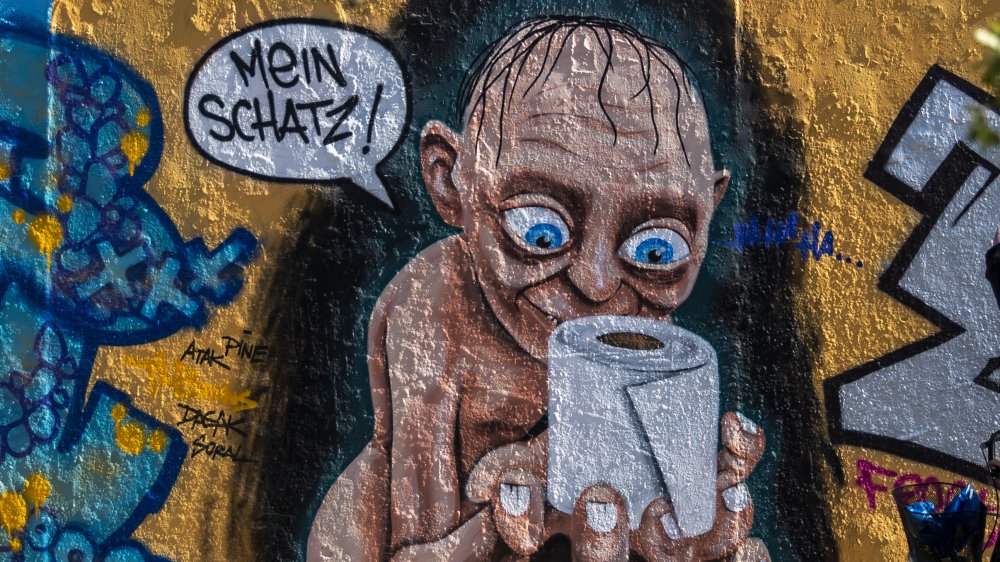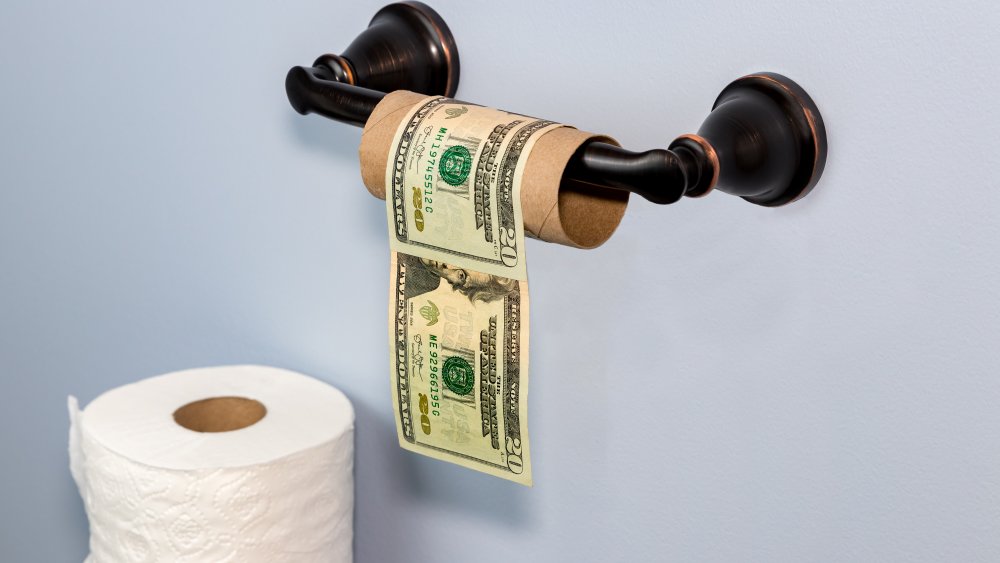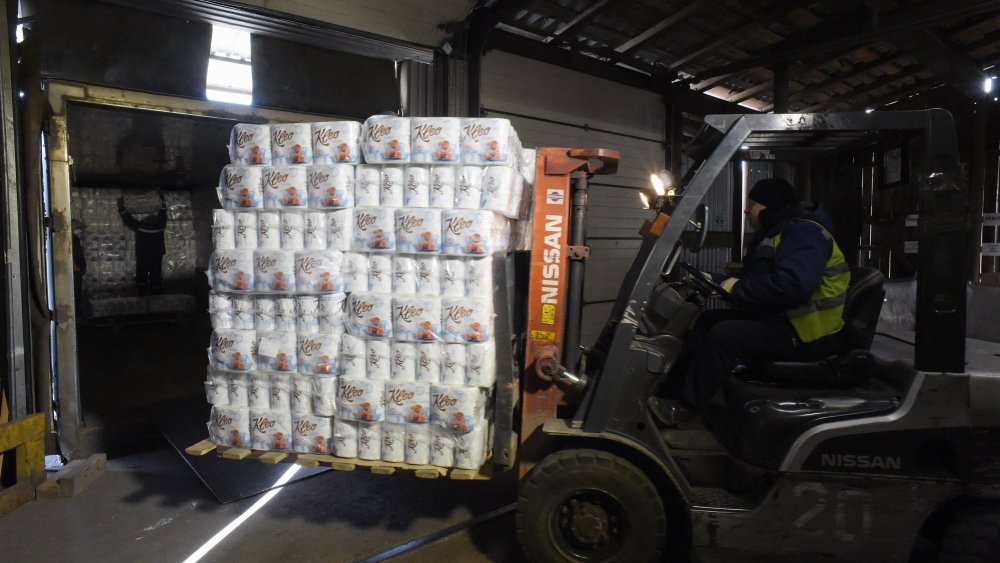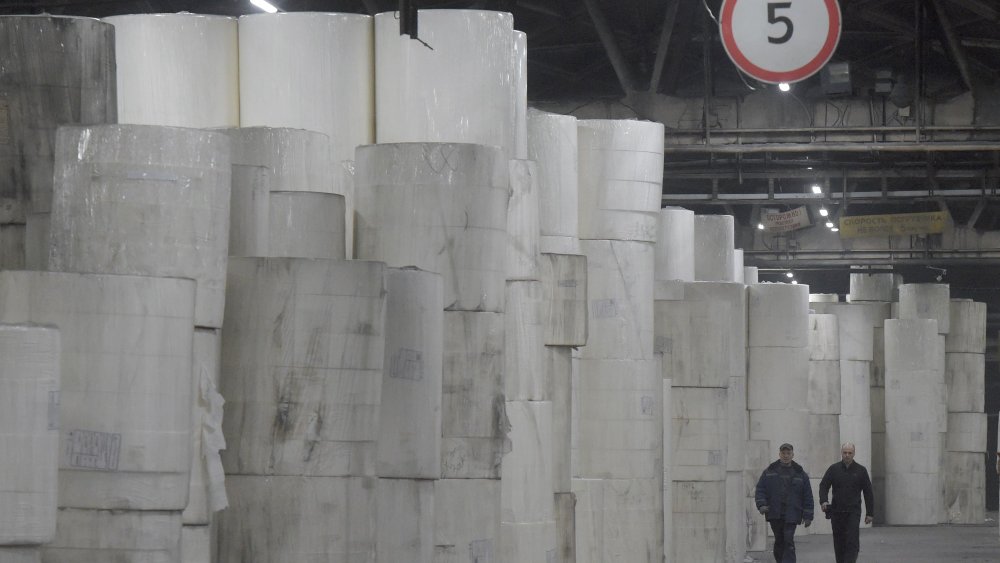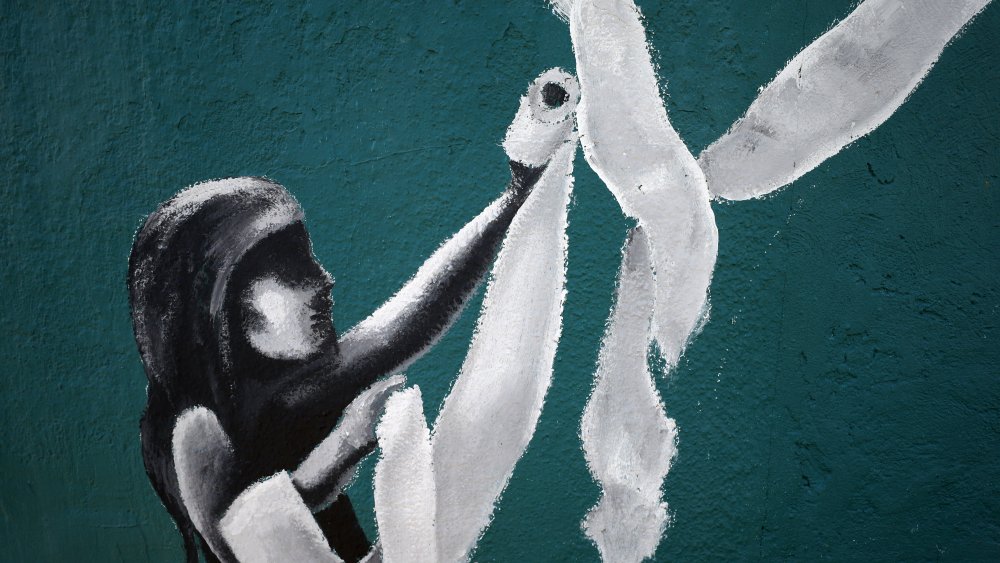The Real Reason You Can't Find Toilet Paper Isn't What You Think
Times of crisis can realign society's priorities. Does a country confronting the prospect of Depression-era levels of unemployment offer its crestfallen workforce a New Deal, or a raw deal? Does it feed the poor and hungry, or make fat cats' wallets morbidly obese? What do people turn to for comfort as the seas of upheaval threaten to crash them against the jagged rocks of despair? Is it friends? Family? The joy of making another person smile?
Nope to all of those. Society went with 2-ply.
The world's number one priority must be number two, because toilet paper is on a roll lately, which unfortunately means it's not on store shelves. But why is TP selling like hot cakes at a fire sale? You might chalk it up to a scarcity-induced fear of missing out, the same sort of Black Friday-esque frenzy that has driven people to shell out tens of thousands of dollars to own a single pair of Yeezys. And as the Bloodhound Gang hopefully said, "You and me baby ain't nothin' but mammals, so let's doo-doo like they do in that Charmin bear commercial." However, while humans are just glorified poop-flinging, butt-wiping apes, there may be crappier factors at play than people fearing that there won't be enough TP for them to one day do the Charmin bear dance with a pair of underwear they aren't wearing, for some reason.
Artificially driving up the price for resale
Not to get too cynical, but people are fundamentally selfish monsters that will exploit any situation for profit. That might mean selling bogus cures for the novel coronavirus like Jim Bakker was sued for doing, flooding the internet with articles about toilet paper or buying up all the toiletries people use in hopes of jacking up the price. The latter avenue of exploitation relies on a willful manipulation of scarcity rather than panic-driven consumption.
As Investopedia explains, the law of supply and demand dictates that when demand for a good exceeds the supply, "prices tend to rise." What better way to make a dishonest buck during a pandemic than cornering the resale market on items people will rush to buy? The drive to drive up prices has already been observed with hand sanitizer and surgical masks. For instance, Time Magazine reports that brothers Matt and Noah Covin bought up 17,700 bottles of hand sanitizer, some of which Matt attempted to sell on Amazon for between $8 and $70 a bottle.
There have also been instances of attempted toilet paper price gouging. According to ABC affiliate WXYZ in Detroit, in March 2020, a Michigan man was spotted selling individual boxes of toilet paper for $60 in cash in a parking lot. Per NBC San Diego, eight people were arrested in California for price gouging after peddling TP, sanitizers, and masks for up to 20 times the normal retail value.
It takes time to restock toilet paper
On March 18, 2020, CBS News ran the headline, "America has plenty of toilet paper. Stocking empty store shelves is the hard part." That might sound preposterous to your hind parts, which are no doubt aching with angst over how many days it will take to wipe out a year's supply of TP. But U.S. toilet paper makers say the problem isn't that they've run out of rolls but that they can't roll them out to stores fast enough. According to Georgia Pacific, which makes Angel Soft, Quilted Northern, and other wiping-related paper products, the "timing [for restocking shelves] is uncertain due to many variables in the supply chain process." CBS also quoted the company as saying "you can just load and unload so fast" in a statement that has since been updated.
In an April post by NPR, Planet Money's Alexi Horowitz-Ghazi remarked, "Bottlenecks like trucking capacity, warehouse and storage space and labor shortages all affect how quickly grocery stores can restock their shelves during surging demand. But that doesn't mean we'll actually be running out of toilet paper anytime soon." In fact, CNBC reports that compensating for this anomalous uptick in TP demand may ultimately lead to a surplus in paper products because people won't need to buy more of what they've hoarded already.
It's not a matter of how much paper, but what kind
According to economics professor Jim Luke at Lansing Community College, the present dearth of butt cheek polishers has more to do with distribution of paper than with the actual amount of paper available. Manufacturers make two types of toilet paper: one that comes on ginormous rolls that are usually too big for your bathroom's dispenser, and another that's sized just right for wiping your heinie. If there's a huge surge in demand for one and a gigantic drop in demand for the other, a company can't just start selling you oversize rolls and hope for the best.
"Not only is it not the same product, but it often doesn't come from the same mills," Luke observed. That appears to be a driver of the current predicament. Trying to get those mills to shift to making toilet paper suited for residences would require all sorts of contractual rejiggering, new packaging, and altered trucking routes. And once demand died down for the smaller rolls and rose for the larger ones, those companies would then have to change all of that back to capitalize. "I'm absolutely convinced that very little was triggered by hoarding," Luke opined.
Bottlenecks in the wipeline
If you follow the shelf-shortage down another layer, or ply, you'll find that the world's largest pulp producers — the only ingredient required to make toilet paper — have been similarly backed up due to border closings, personnel issues and increased regulations on overseas shipments, according to Reuters. This makes things extra tough, because China, North America and Western Europe, the top producers of pulp, are also some of the most directly in need of it. The company P&G, which makes Charmin toilet paper, has stated it is trying to get U.S. tissue products to retailers "as fast as humanly possible", and shipping them "at record high levels."
To that end, the company – which makes use of European pulp for most of its personal hygiene products and North American and Latin American pulp to make tissue, has "recently restarted an idled toilet paper production line at a plant in Albany, Georgia." Despite these efforts, there will be lag time until toilet paper is in abundance on shelves once more ... it just might take a little while. And while a temporary lack of toilet paper is crappy, it's not the end of the world for your rear end. Just roll with it.
